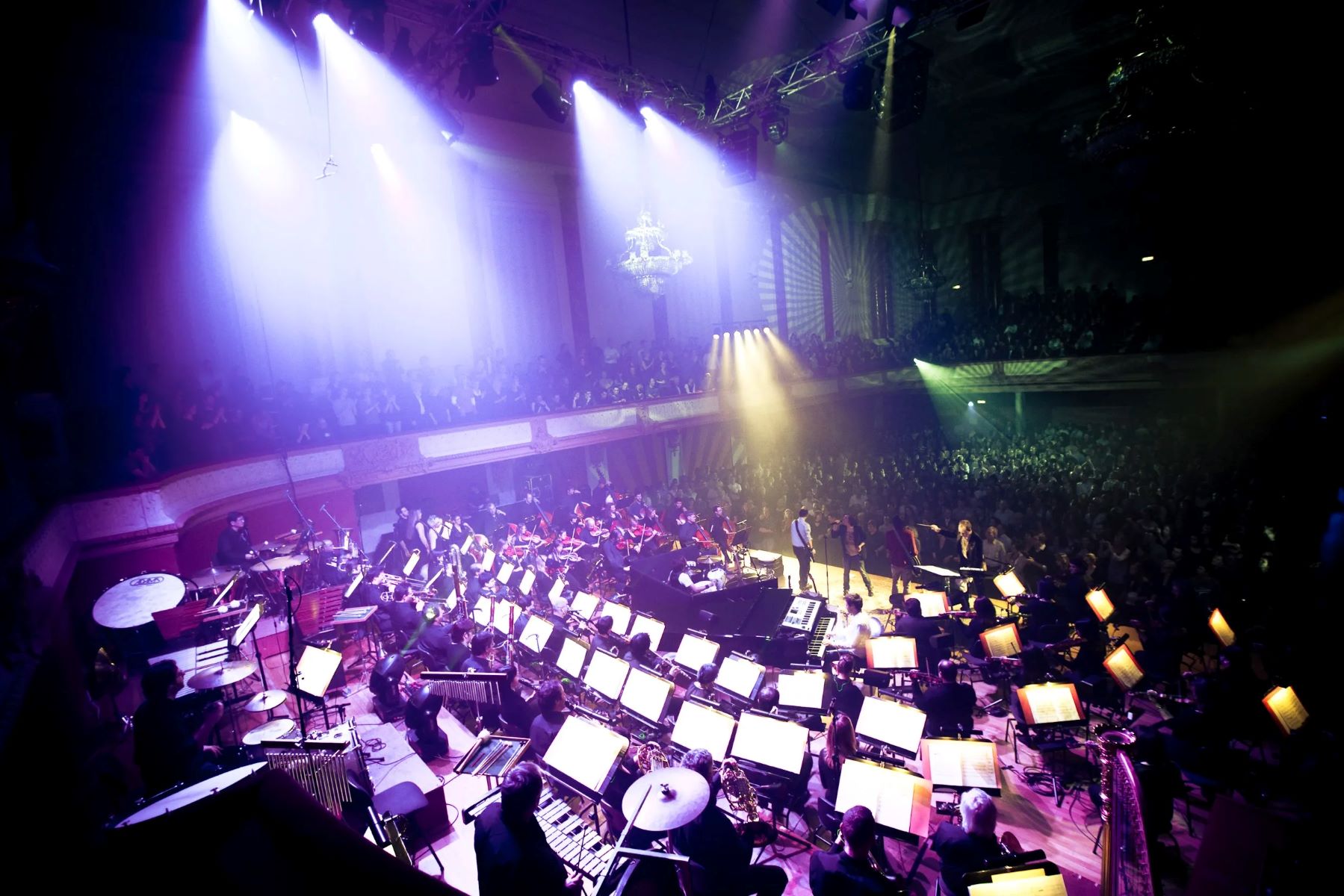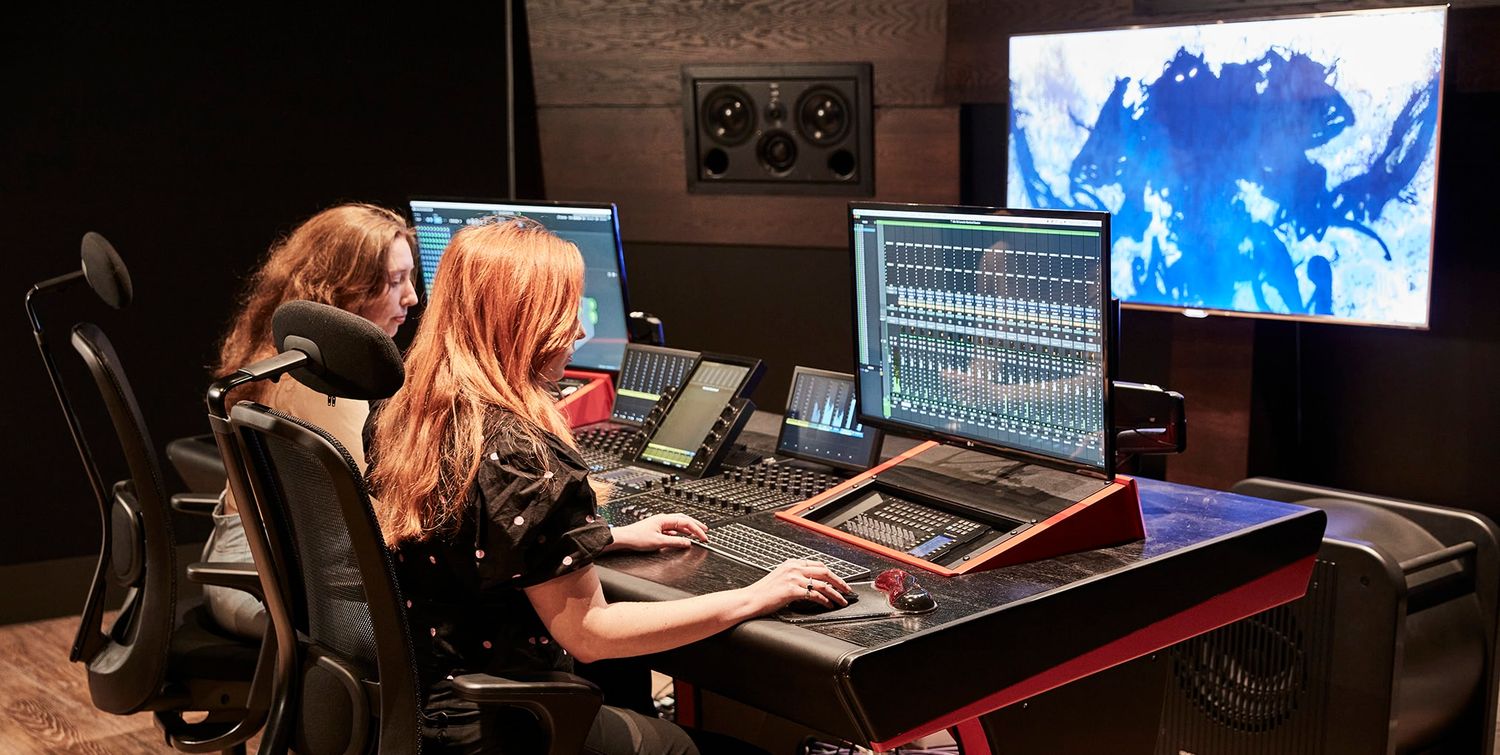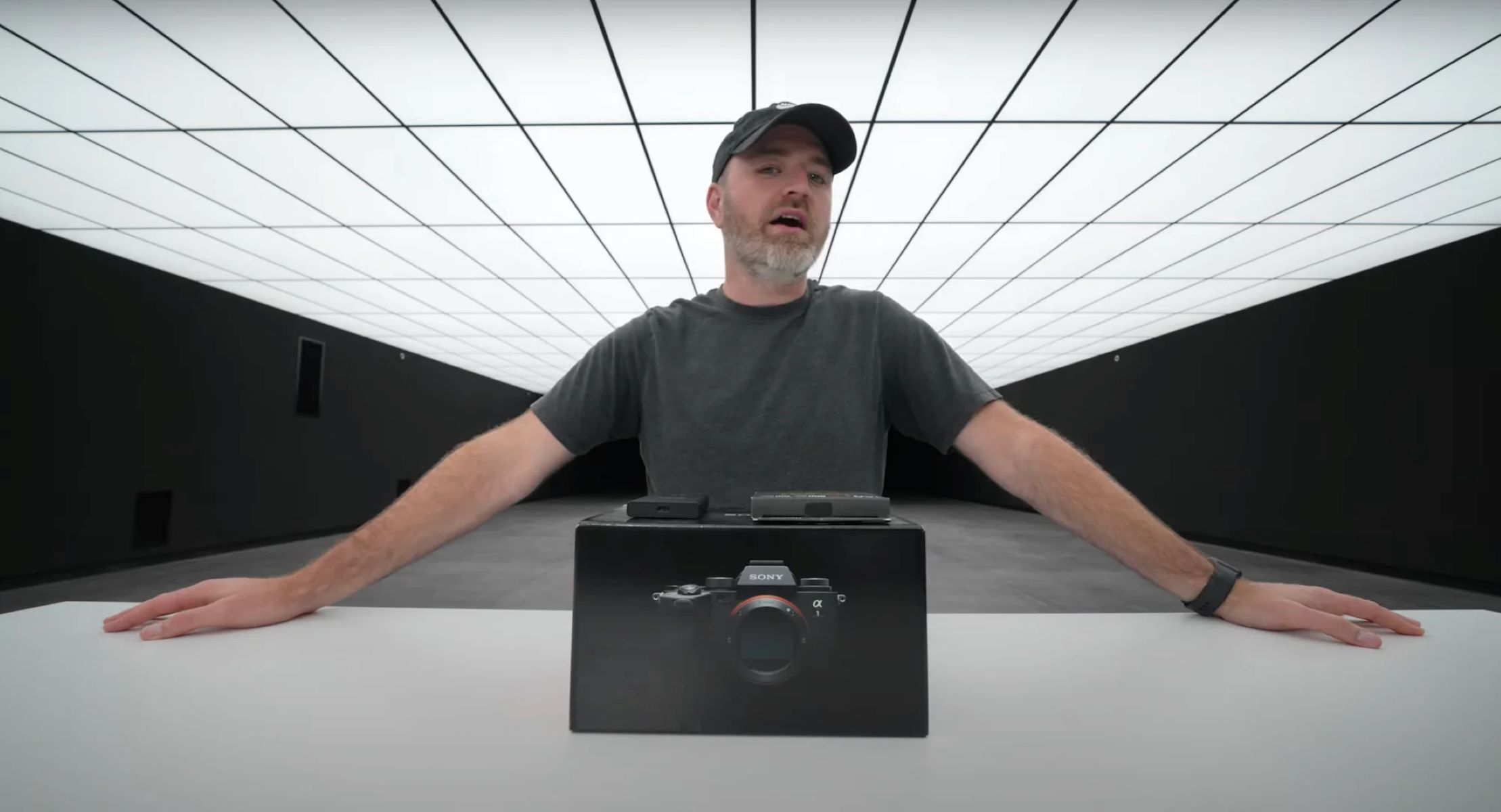Home>Production & Technology>Background Music>How Does Background Music Affect Movies


Background Music
How Does Background Music Affect Movies
Modified: January 22, 2024
Discover the powerful impact of background music on movies. Explore how different musical choices enhance emotions and intensify storytelling.
(Many of the links in this article redirect to a specific reviewed product. Your purchase of these products through affiliate links helps to generate commission for AudioLover.com, at no extra cost. Learn more)
Table of Contents
- Introduction
- Importance of Background Music in Movies
- Emotional Impact of Background Music
- Setting the Tone and Atmosphere
- Enhancing Narrative and Storytelling
- Creating Suspense and Tension
- Establishing Characterization
- Use of Leitmotifs
- Communicating Time and Place
- Influencing Audience Perception and Engagement
- Collaboration between Composers and Directors
- Conclusion
Introduction
Background music plays a crucial role in the world of movies, adding depth, emotion, and atmosphere to the film-going experience. It is an essential element that can greatly impact the overall quality and effectiveness of a movie. Whether it’s a suspenseful thriller, a heartwarming drama, or an action-packed adventure, the right choice of background music can elevate the storytelling to new heights.
Background music serves as an emotional cue, guiding the audience through the different moods and tones of a movie. It has the power to evoke emotions, create tension, and establish a connection between the viewer and the characters on screen. From soaring orchestral compositions to subtle ambient melodies, the choice of background music can shape the way we perceive and feel about a movie.
This article will explore the importance of background music in movies and the various ways in which it affects the overall viewing experience. We will delve into the emotional impact of background music, its role in setting the tone and atmosphere of a movie, as well as its ability to enhance narrative storytelling, create suspense, and establish characterization. Additionally, we will look at how background music can communicate time and place, influence audience perception and engagement, and the collaborative process between composers and directors in selecting the perfect soundtrack for a movie.
Whether it’s a heart-pounding action sequence, a tender love scene, or a climactic moment of revelation, background music is the invisible thread that weaves together the various elements of a movie, amplifying its impact and immersing the audience in the story. It is a powerful tool that can transport us to different worlds, elicit strong emotions, and leave a lasting impression.
Importance of Background Music in Movies
Background music plays a pivotal role in movies, serving as a powerful tool to enhance storytelling and evoke emotions. It is more than just a mere accessory; it is a vital element that can make or break a movie. Here are some key reasons why background music is essential in the world of films:
- Setting the Mood: Background music sets the tone and atmosphere of a movie. It helps create the desired mood, whether it is a romantic, suspenseful, or action-packed film. The right music can transport the audience to different emotional landscapes, intensifying the impact of each scene.
- Enhancing Emotional Impact: Music has a unique ability to convey emotions that words alone may struggle to express. In movies, background music acts as a powerful emotional cue, amplifying the emotions portrayed on screen. It can make the audience feel joy, sadness, fear, or excitement, intensifying the emotional connection between the viewer and the characters.
- Filling the Gaps: Background music fills the gaps between dialogues and actions, creating a seamless cinematic experience. It helps maintain the flow of the story, preventing moments of silence that may feel awkward or disjointed. By filling these gaps, background music ensures a smooth and engaging viewing experience.
- Building Suspense and Tension: One of the most effective uses of background music is to create suspense and tension. The right composition can build anticipation, keeping the audience on the edge of their seats. By strategically placing silent moments followed by sudden bursts of intense music, filmmakers can manipulate the viewer’s emotions and make the movie even more gripping.
- Establishing Characterization: Background music can help define and develop characters in a movie. By associating specific musical motifs or themes with certain characters, composers can subtly communicate their personality traits, struggles, or motivations. This enhances the audience’s understanding and connection with the characters, adding depth and complexity to the storytelling.
Overall, background music in movies is not just about filling the audio space; it is an integral part of the filmmaking process that enhances the overall experience for viewers. From setting the mood and evoking emotions to creating suspense and developing characters, the impact of background music cannot be underestimated. It is a powerful tool that helps bring stories to life and immerses the audience in the magic of cinema.
Emotional Impact of Background Music
One of the most significant effects of background music in movies is its ability to evoke powerful emotions in viewers. Music has a profound impact on our emotional state, and when skillfully integrated with visuals, it can enhance the audience’s connection with the story and characters. Here are some key ways in which background music influences our emotions when watching a movie:
- Eliciting Joy and Happiness: Upbeat and lively melodies can instantly lift our spirits and create a sense of joy and happiness. In feel-good movies or scenes portraying moments of triumph and celebration, background music with a cheerful tone can amplify the intended emotions, making us feel elated and content.
- Conveying Sadness and Melancholy: Slow, mournful melodies and minor chord progressions can evoke a strong sense of sadness and melancholy when paired with poignant scenes. The music can provide a cathartic experience, encouraging us to empathize with the characters and feel a deep emotional connection to their struggles and sorrow.
- Creating Suspense and Fear: Intense and eerie background music can make our hearts race, signaling imminent danger or creating an atmosphere of suspense and fear. It heightens anticipation and keeps us on the edge of our seats, intensifying the impact of suspenseful scenes and amplifying our emotional response to the storyline.
- Stirring Romantic Feelings: Romantic movies often use soft, melodic music to evoke feelings of love, passion, and tenderness. The right background music can enhance the chemistry between characters, adding an extra layer of emotion to romantic scenes and eliciting a sense of longing and warmth in the hearts of the audience.
- Instilling Excitement and Energy: Fast-paced and energetic background music can generate a sense of excitement, especially in scenes involving action, adventure, or thrilling sequences. The pulsating rhythms and intense melodies create a heightened state of anticipation, immersing viewers in the thrilling moments unfolding on the screen.
Through carefully chosen melodies, harmonies, and rhythms, background music has the power to tap into our emotions, heightening our emotional engagement with the movie. It facilitates a deeper connection with the characters and story, enabling us to experience a range of emotions alongside them. From joy and sadness to fear and excitement, background music helps shape our emotional journey as we immerse ourselves in the world of the movie.
Setting the Tone and Atmosphere
The role of background music in setting the tone and atmosphere of a movie cannot be overstated. It has the power to transport viewers to different worlds, elicit specific emotions, and establish the overall mood of a film. Here are some key ways in which background music sets the tone and atmosphere in movies:
- Genre-specific Soundtracks: Different movie genres have distinct soundtracks that reflect their tone and atmosphere. For example, a horror film may feature eerie and haunting music, while a romantic comedy may have light-hearted and playful melodies. The choice of genre-specific background music immediately signals to the audience the type of emotions and experiences they can expect from the movie.
- Creating a Sense of Time and Place: Background music helps to immerse viewers in the specific time period and location of a film. Whether it’s a historical drama set in the 18th century or a futuristic sci-fi adventure, the music can capture the essence of the era and location, providing a rich backdrop that enhances the visual storytelling.
- Matching the Visual Aesthetic: The visual style and aesthetics of a movie can be complemented and enhanced by the choice of background music. If a film has a dark, gritty visual tone, the music may have a raw and edgy quality. Conversely, a movie with vibrant and colorful visuals may be accompanied by upbeat and lively music. The synergy between the visuals and the music creates a cohesive and immersive experience for the audience.
- Setting the Pace and Energy: Background music contributes to the overall rhythm and pace of a film. It can dictate the energy level of a scene, whether it’s a slow-paced moment of introspection or a fast-paced action sequence. The tempo, dynamics, and instrumentation of the music align with the on-screen action, effectively synchronizing the sensory experience and intensifying the desired mood.
- Establishing Subtle Emotions and Nuances: Background music can convey subtle emotions and nuances that may not be explicitly shown on screen. It adds depth and layers to the storytelling, allowing the audience to connect with the characters and their inner thoughts and feelings. By using carefully crafted melodies and harmonies, the music can hint at hidden emotions, conflicts, or character motivations, enriching the viewing experience.
Background music serves as the invisible language that guides the audience through the emotional landscape of a film. By setting the tone and atmosphere, it prepares viewers for the journey ahead, immersing them in the world of the movie and amplifying the overall cinematic experience.
Enhancing Narrative and Storytelling
Background music plays a vital role in enhancing the narrative and storytelling of a movie. It works in harmony with the visuals, dialogues, and other cinematic elements to create a cohesive and immersive experience for the audience. Here are some key ways in which background music enhances the narrative and storytelling:
- Emphasizing Key Moments: Background music can be strategically used to highlight and emphasize important moments in the story. Whether it’s a climactic revelation, a pivotal plot twist, or a significant character interaction, the right music can heighten the impact of these moments, making them more memorable and emotionally impactful.
- Guiding Emotional Transitions: Transitions between different emotional states or tonal shifts in a film can be effectively facilitated through background music. It helps smooth the transition for the audience, bridging the gap between different scenes or moods and ensuring a seamless flow of emotions. This allows the narrative to unfold smoothly and keeps the viewer engaged throughout.
- Symbolic Representation: Background music can be used symbolically to represent certain themes or motifs in a movie. By associating specific musical cues with particular story elements or characters, filmmakers can create a deeper layer of meaning and symbolism. These musical motifs can serve as a narrative thread that connects various aspects of the story, adding depth and coherence to the overall narrative structure.
- Aiding Character Development: Background music can provide valuable insights into the internal world of characters and aid in their development. By using character-specific musical themes or leitmotifs, composers can evoke a particular mood or convey a character’s personality traits, backstory, or emotional journey. This adds complexity and depth to the characters, enhancing their portrayal and making them more relatable to the audience.
- Creating Narrative Arcs: Just like the storytelling structure, background music can have its own narrative arc. It can start subtly, building tension and anticipation as the story progresses, and reach a crescendo during pivotal moments. The music can mirror the rise and fall of the narrative, intensifying the emotional impact and creating a cohesive and satisfying experience for the audience.
By working in tandem with other cinematic elements, background music seamlessly weaves together the narrative threads, enhances character development, and amplifies the emotional impact of a movie. It adds depth, richness, and cohesion to the storytelling, creating a powerful and memorable cinematic experience for the audience.
Creating Suspense and Tension
One of the key roles of background music in movies is to create suspense and tension, effectively engaging the audience and keeping them on the edge of their seats. By using specific musical techniques and compositions, filmmakers can manipulate emotions and enhance the overall cinematic experience. Here are some ways in which background music creates suspense and tension:
- Building Anticipation: Background music can slowly build anticipation through the use of repetitive motifs or gradually increasing intensity. By starting with soft, subtle melodies and gradually introducing more complex harmonies and rhythms, the music sets the stage for imminent suspenseful events. This gradual build-up creates a sense of anticipation and keeps the audience engaged throughout.
- Creating Dissonance: Dissonant chords and unconventional harmonies can create a sense of unease and tension. By introducing dissonance into the background music, filmmakers can heighten the suspenseful atmosphere and evoke feelings of discomfort or uncertainty. This discordance between the music and visuals adds an extra layer of tension to the scene.
- Utilizing Silence: Sometimes, the absence of background music can be just as impactful as its presence. Strategic use of silence can create a heightened sense of tension, as it allows the audience to focus on the smallest of sounds or the characters’ breathing, intensifying the suspense of a scene. The sudden absence of music can indicate an impending danger or a shocking revelation, leaving the viewers on the edge of their seats.
- Using Sudden Crescendos and Accents: Well-placed sudden crescendos or accents in the background music can startle the audience, adding a jolt of tension and surprise to a scene. These musical bursts often align with moments of high drama or shocking events, creating an immediate sense of suspense and capturing the attention of the viewers.
- Employing Pulsating Rhythms: Fast, pulsating rhythms in background music can create a sense of urgency and impending danger. These rhythmic patterns can match the pacing of action sequences or chase scenes, intensifying the adrenaline rush and heightening the overall tension in the movie.
By utilizing these techniques, background music in movies effectively creates suspense and tension, enhancing the overall viewing experience. It keeps the audience engaged, captivated, and invested in the unfolding events on screen, heightening the emotional impact and making the movie more thrilling and suspenseful.
Establishing Characterization
Background music in movies plays a crucial role in establishing characterization by providing valuable insights into the personalities, emotions, and motivations of the characters. By using specific musical cues, composers can enhance the audience’s understanding and connection with the characters, making them more relatable and multidimensional. Here’s how background music helps establish characterization:
- Character-Specific Themes: Background music can be tailored to individual characters, with each having their own unique musical theme or leitmotif. These recurring melodies or motifs associated with specific characters can reflect their personality traits, experiences, or emotional journeys. By hearing these musical motifs whenever a character is on screen, the audience forms a strong association with that character, gaining deeper insights into their story and development.
- Mood and Emotions: The choice of background music can depict the moods and emotions experienced by a character. Upbeat and joyful music may signify a character’s happiness, while somber or melancholic music may indicate their sadness or inner turmoil. By providing an emotional backdrop to the character’s journey, the music allows the audience to empathize and connect with them on a deeper level.
- Conflict and Growth: As characters face conflicts or undergo personal growth, the background music can reflect these transformations. Shifts in musical themes, dynamics, and tempos can signify the character’s evolution and the challenges they encounter. This helps the audience witness the character’s growth and provides a richer characterization within the story.
- Subtle Nuances: Background music also has the power to convey subtle nuances in a character’s personality or motivations. By using specific musical elements such as instrumentation, rhythm, or harmonies, composers can convey hidden aspects of a character’s behavior or intentions. These subtle musical cues allow the audience to delve deeper into the character’s psyche and motivations, adding complexity and depth to their portrayal.
- Contrasting Themes: At times, the music might contrast with a character’s actions or appearance, revealing a hidden or unexpected side. This creates an intriguing layer of complexity, challenging the audience’s expectations and allowing for further exploration of the character’s depth. The juxtaposition of contrasting music and character traits adds richness to their characterization.
By aligning the background music with the specific traits, emotions, and journeys of the characters, filmmakers can establish a deeper and more intimate connection between the audience and the characters. Background music enhances the characterization in movies, providing a powerful tool for storytelling and allowing viewers to fully immerse themselves in the lives and experiences of the characters they encounter on screen.
Use of Leitmotifs
The use of leitmotifs is a powerful technique in background music that enhances the storytelling and adds depth to a movie. A leitmotif is a recurring musical theme or motif associated with a specific character, place, object, or idea. By employing leitmotifs, composers can establish a strong musical identity and provide a deeper understanding of the elements within a film. Here’s how the use of leitmotifs contributes to the cinematic experience:
- Character Identification: Leitmotifs help to identify individual characters, giving them a distinct musical identity. Each character’s leitmotif captures their essence, personality, or role within the story, making them easily recognizable to the audience. When a leitmotif is heard, it immediately calls to mind the associated character and their story, enhancing the overall characterization within the film.
- Emotional Connection: Leitmotifs evoke specific emotions and help deepen the audience’s emotional connection to the characters or themes they represent. The use of leitmotifs can invoke nostalgia, elicit empathy, or highlight the complexities of a character’s emotional journey. The repetition of these musical themes throughout the film reinforces the emotional impact and intensifies the viewer’s engagement with the story.
- Symbolism and Narrative Themes: Leitmotifs can be used to symbolize or represent important narrative themes or symbols within a movie. By associating particular melodies or musical phrases with key story elements, filmmakers can weave a tapestry of symbolism and deeper meaning. These leitmotifs allow the audience to connect the dots and understand the underlying themes and motifs that propel the narrative forward.
- Character Development: Leitmotifs can evolve and develop alongside the characters, reflecting their growth and changes throughout the story. As characters undergo transformations or face significant events, their leitmotifs can adapt and change, providing a musical representation of their development. This adds layers of complexity and depth to the characters, enhancing their arcs and making their journeys more impactful.
- Unity and Coherence: The use of leitmotifs helps create unity and coherence within a film, tying together various elements of the story. When specific themes or motifs reappear in different contexts or scenes, it creates a sense of interconnectedness and reinforces the overall narrative structure. Leitmotifs act as a musical thread that weaves different aspects of the film together, creating a cohesive and immersive experience for the audience.
The use of leitmotifs in background music enhances the storytelling and enriches the cinematic experience. By providing a musical identity to characters, evoking emotions, symbolizing narrative themes, and creating unity, leitmotifs contribute to the depth, complexity, and overall impact of a movie.
Communicating Time and Place
Background music in movies serves as a powerful tool to communicate the sense of time and place, transporting the audience to different eras and locations. By utilizing specific musical styles, instruments, and cultural references, filmmakers can create a rich and immersive cinematic experience. Here’s how background music communicates time and place:
- Musical Styles: Different musical styles are associated with specific time periods and cultures. By incorporating music genres from a particular era or region, filmmakers can instantly establish the time and place of a movie. Whether it’s the swinging jazz of the 1920s or the psychedelic rock of the 1960s, the choice of musical style provides a sonic backdrop that captures the essence of a particular time in history.
- Instrumentation: The use of specific instruments can evoke a sense of time and place. For example, the use of traditional instruments like the sitar or tabla can transport the audience to the vibrant streets of India, while the haunting strains of a bagpipe can evoke the rugged landscapes of Scotland. Instrumentation provides a sonic language that communicates the cultural and geographical contexts of a movie.
- Regional and Folk Music: Incorporating regional or folk music specific to a location can create an authentic sense of place. Whether it’s the soulful melodies of the blues in the American Deep South or the rhythmic beats of flamenco in Spain, these musical traditions reflect the cultural fabric of a location and provide a unique sonic identity for the film.
- Historical Significance: Background music can also be used to reflect the historical significance of a time period or event portrayed in the movie. By incorporating music that was popular or influential during a specific historical era, filmmakers can create a more immersive experience, transporting the audience to that particular time and capturing the spirit of the era.
- Cultural References: Background music can incorporate cultural references that are associated with a specific time and place. Whether it’s the use of well-known songs or music themes from a particular culture, these references can instantly evoke the cultural context and provide a deeper understanding of the setting of the movie.
Through the strategic use of musical styles, instrumentation, regional/folk music, historical reference, and cultural elements, background music effectively communicates the sense of time and place in a movie. It immerses the audience in the distinct atmospheres and contexts of different eras and locations, enhancing the storytelling and enriching the overall cinematic experience.
Influencing Audience Perception and Engagement
Background music in movies has a profound impact on audience perception and engagement. Through the use of carefully selected melodies, harmonies, and rhythms, filmmakers can shape how viewers interpret and experience the film. Here’s how background music influences audience perception and engagement:
- Enhancing Immersion: Background music creates an immersive experience for the audience, drawing them deeper into the world of the movie. By evoking a specific mood or atmosphere through the music, viewers become more emotionally invested and engaged with the story, characters, and events unfolding on screen.
- Guiding Emotional Response: The choice of background music guides and influences how the audience responds emotionally to different scenes and narrative moments. By using specific musical cues, filmmakers can prompt feelings of joy, sadness, fear, excitement, or tension, enhancing the emotional impact of the film and creating a stronger connection between the viewer and the story.
- Empathy and Identification: Background music helps viewers empathize with the characters, providing a sonic window into their experiences and emotions. By aligning the audience’s emotions with the characters through the music, filmmakers foster a sense of identification and emotional connection, allowing viewers to feel deeply invested in their journeys.
- Heightened Suspense and Drama: Well-placed background music can heighten suspense and drama, intensifying the impact of key moments in the film. By using crescendos, staccatos, or dramatic musical swells, filmmakers build tension and anticipation, keeping the audience captivated and engaged, eagerly awaiting the resolution of the unfolding events in the story.
- Facilitating Narrative Understanding: Background music can aid in the audience’s comprehension and interpretation of the story. Through leitmotifs, musical themes, or sonic symbolism, filmmakers can provide subtle cues and hints that enhance understanding of character motivations, plot developments, or thematic elements. This deepens the audience’s engagement and involvement with the film’s narrative.
By harnessing the power of background music, filmmakers can greatly influence audience perception and engagement with their movies. Whether it’s through creating an immersive experience, guiding emotional responses, fostering empathy, intensifying suspense, or aiding narrative understanding, background music plays a pivotal role in shaping the audience’s interpretation and emotional connection to the film.
Collaboration between Composers and Directors
The collaboration between composers and directors is a critical aspect of creating effective background music for movies. It is a creative partnership that requires clear communication, shared vision, and mutual respect. Here’s how the collaboration between composers and directors contributes to the success of the movie:
- Establishing a Creative Framework: The collaboration begins with the director conveying their vision, goals, and desired emotional impact of the film. Composers work closely with the director to understand the tone, themes, and pacing of the movie, establishing a creative framework that guides the musical composition process.
- Complementing the Story: Composers take cues from the director’s storytelling approach to create background music that enhances and supports the narrative. They strive to understand the characters, their motivations, and the emotional arcs within the story, ensuring that the music complements and elevates the on-screen action and dialogue.
- Translating Emotions into Music: Directors rely on composers to translate their desired emotional impact into music. Through discussions and feedback sessions, composers create compositions that effectively convey the intended emotions, enhancing the audience’s connection with the story and characters.
- Providing Temp Tracks: Directors often provide temp tracks, which are temporary music pieces from existing compositions, as reference points during the editing phase. These temp tracks help the composer understand the director’s musical preferences and desired mood for specific scenes. It serves as a starting point for discussions and inspires the creative direction of the original score.
- Experimenting and Iterating: The collaborative process involves experimentation and iteration. Composers present initial musical ideas to the director, who provides feedback and suggestions for revisions. This back-and-forth dialogue allows the music to evolve and align with the director’s vision, ensuring that the final score achieves the desired emotional impact.
- Timing and Pacing: Composers and directors work closely to create music that fits seamlessly with the timing, pacing, and rhythm of the film. They consider the duration of scenes, the tempo of dialogue, and the overall flow of the movie to design music that enhances the storytelling and enhances the audience’s engagement.
- Mutual Trust and Collaboration: A strong collaboration relies on mutual trust and respect between composers and directors. Directors trust the creative instincts and expertise of the composers, while composers understand and respect the director’s artistic vision. This partnership enables open communication, constructive feedback, and the freedom to explore different musical possibilities.
The collaboration between composers and directors is essential in creating impactful background music for movies. Through their shared vision, mutual understanding, and creative synergy, composers and directors work together to ensure that the music enhances the narrative, resonates with the intended emotions, and contributes to the overall success of the film.
Conclusion
Background music is a powerful and integral component of the movie-making process. It enhances the storytelling, evokes emotions, and immerses the audience in the cinematic experience. From setting the tone and atmosphere to establishing characterization and creating suspense, background music plays a crucial role in captivating and engaging viewers.
Through the use of leitmotifs, composers create a musical language that deepens our understanding of characters and themes, while also providing unity and cohesion to the overall narrative. Collaboration between composers and directors ensures that the music aligns with the filmmaker’s vision and enhances the emotional impact of the film. This partnership requires effective communication, trust, and a shared creative approach.
Background music also influences audience perception and engagement by guiding emotional responses, fostering empathy, and intensifying suspense and drama. It communicates the sense of time and place, transporting viewers to different eras and locations, and immersing them in the story’s cultural and historical context.
In conclusion, background music is a powerful tool that greatly enhances the movie-viewing experience. It brings depth, emotion, and coherence to the storytelling, creating a lasting impact on the audience. Whether it’s the soaring melodies of an epic adventure or the haunting refrains of a psychological thriller, background music adds a layer of artistry that elevates films to new heights.











